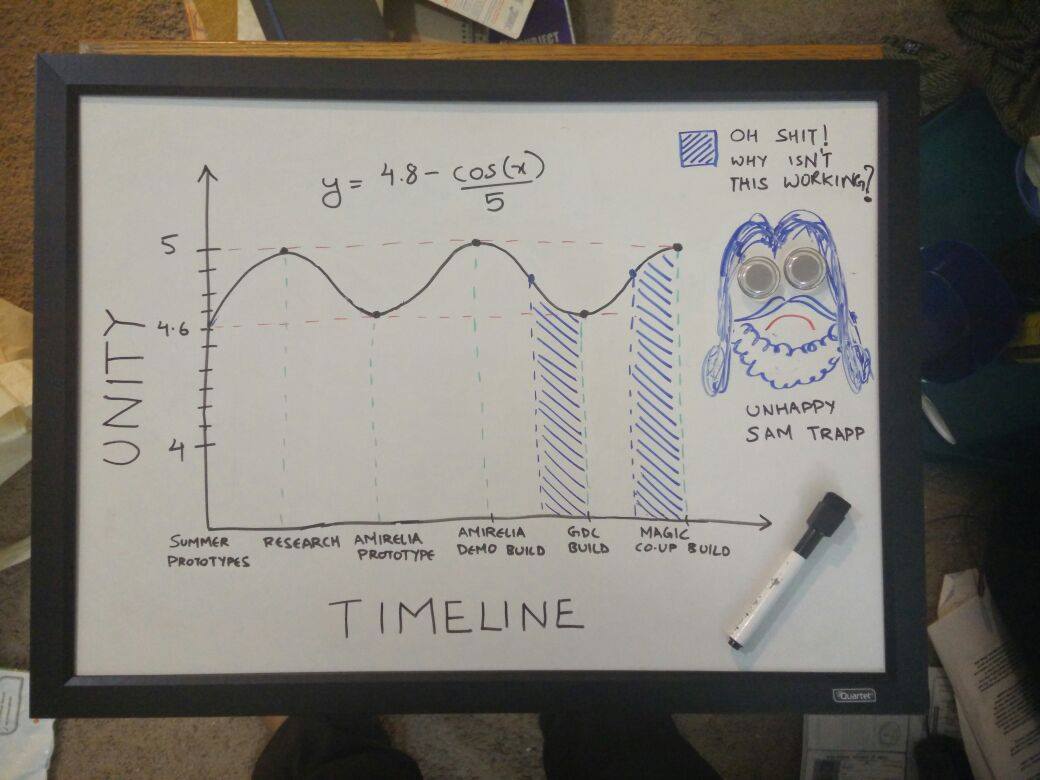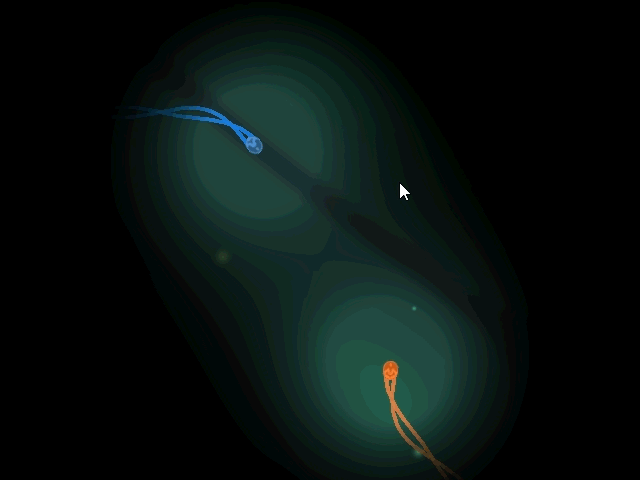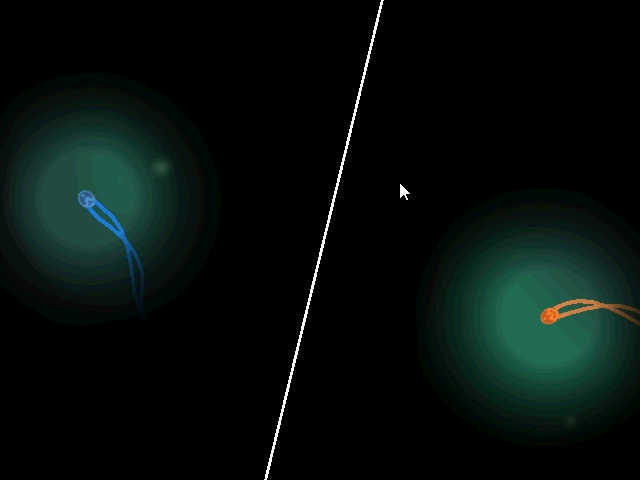We updated the demo build on our website! Play it here. If your browser is unable to load the game, please try another browser or the downloadable version linked on that page. Recent changes to Chrome do not play nicely with the Unity Player, and we have not yet been able to make a WebGL build. Major updates in this new version are listing below.
New Level after Tutorial
After the acquiring the bond, at the end of the tutorial, players now exit the level into a new area. This new area is visually and auditorily distinct from the tutorial, and it features puzzles that teach players fundamental uses of the bond. Both this new level and the tutorial are still being iterated upon based on playtests, but they are nearing completion. This will likely be the last level available in the free demo of the game.
Parallax:
Perspective cameras are now used to show depth between the players and the background. The level that the players move around within is kept at a depth very close to the players, but the background elements are positioned far behind so that they appear to move relative to the camera a vastly different rate. This change means that we know need to pay much closer attention to the depths of objects than we did when using orthographic cameras. After the switch the major work was flattening the parts of the scene that should not appear to parallax relative to the players.
Move to Unity 5:
We’ve been wanting to upgrade to Unity 5 for a couple months now, so transitioning to the MAGIC Lab seemed like the perfect time to upgrade the project and move forward with all the neat new features. Unfortunately, we had not anticipated that the move to PhysX 3.3 would essentially break our primary mechanic! The updated joint physics caused the bond, and all objects that used similar code, to behave erratically when attempting to wrap around something in the world. After tweaking a couple numbers, changing some code, and surviving more than few headaches, we were able to restore the bond’s proper behavior.


